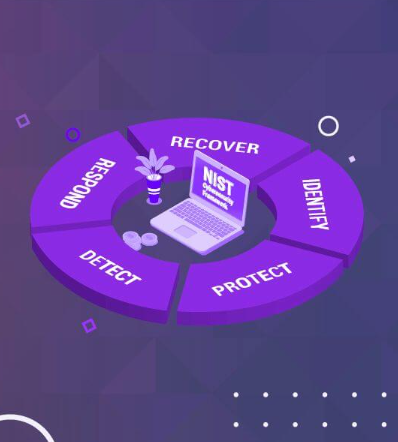Why Your Business Should Align with the NIST Cybersecurity Framework
- 158 Views
- admin
- 03/22/2024
- Cybersecurity
Establishing a reliable cybersecurity program is no small task—especially for companies just starting to build out their security infrastructure. As organizations grow, it’s easy to take an ad hoc approach by adding tools and protocols over time. However, that reactive method leaves major gaps, increasing the likelihood of cyber incidents. Even smaller businesses aren’t immune; a single data breach can have devastating consequences.
A strategic alternative is to adopt the NIST Cybersecurity Framework (CSF) as the foundation for your cybersecurity program. Designed to evolve with your organization’s maturity, the NIST CSF offers a structured, risk-based approach that scales with your business needs and helps prioritize critical actions.
Why the NIST CSF Makes Sense
The NIST CSF is a widely respected model used across industries, particularly in sectors deemed essential to national infrastructure. However, its flexible and adaptable design makes it just as effective for small businesses and startups. Whether you’re in finance, healthcare, manufacturing, or tech, this framework can serve as a blueprint for building a resilient security posture.
Let’s explore the key reasons to consider aligning your program with the NIST CSF.
A Structured, Scalable Foundation
The CSF breaks cybersecurity management into five core functions: Identify, Protect, Detect, Respond, and Recover. These categories guide organizations through the full lifecycle of a cyber threat—from preparing in advance to minimizing damage and restoring operations after an attack.
- Identify – Focuses on understanding your organization’s critical assets, vulnerabilities, and potential threats. This is where risk management policies and governance structures are established.
- Protect – Covers the controls needed to safeguard your systems and data. This includes access management, training, and securing communications and storage.
- Detect – Emphasizes early discovery of threats through continuous monitoring, logging, and alert systems to reduce reaction time when incidents occur.
- Respond – Details how your organization should handle cybersecurity events, including response plans, communication protocols, and mitigation procedures.
- Recover – Guides how to restore business operations following an incident, ensuring continuity and reducing downtime.
By addressing each of these areas, the CSF ensures that businesses aren’t just preparing for known risks but also ready to respond effectively to new and emerging threats.
Built Around Risk Management
At its core, the CSF encourages organizations to focus on risk. It helps assess which assets are most critical, what threats could have the most significant impact, and how to allocate limited resources to address them. This risk-focused mindset ensures that your cybersecurity efforts are both strategic and cost-effective.
Each step in the framework reinforces proactive risk identification and prioritization. Rather than treating security as a checklist, the CSF helps build a dynamic program that evolves with the business environment and threat landscape.
Flexible Enough for Any Industry
One of the NIST CSF’s greatest strengths is its adaptability. It can be tailored to fit the size, structure, and regulatory requirements of any organization. Whether you’re already adhering to ISO 27001, HIPAA, GDPR, or CMMC, the CSF integrates easily with these standards. It serves as a unifying structure that complements existing frameworks rather than replacing them.
This flexibility is especially useful for businesses operating in multiple jurisdictions or sectors, where compliance demands can vary widely.
Using the NIST CSF as a Strategic Advantage
Adopting the NIST Cybersecurity Framework isn’t about checking boxes—it’s about building a security program that aligns with your company’s goals, operations, and risk profile. Its emphasis on structured planning and continuous improvement makes it ideal for businesses seeking both compliance and resilience.
More importantly, the CSF bridges the communication gap between technical teams and executive leadership. It provides clear, business-relevant insights into cybersecurity priorities, making it easier to justify investments, measure progress, and make informed decisions.
Final Thoughts
Whether your business is just beginning to develop its cybersecurity strategy or refining an existing program, the NIST CSF offers a practical path forward. It helps you build a security posture that’s scalable, risk-aware, and flexible—qualities every organization needs to defend against today’s complex cyber threats.
Recent Posts
- How AI is Revolutionizing Architectural Design: A Look at Tools, Trends, and the Future
- Streamlining Cyber Risk Assessments Through Automation
- Understanding the Difference Between Blockchain and Distributed Ledger Technology
- Is Bitcoin Mining Still a Viable Venture in 2025?
- Exploring AI: Unveiling Possibilities, Challenges, and Future Implications

